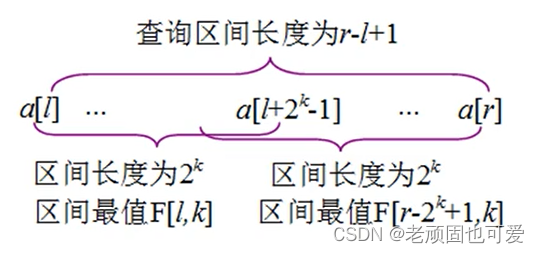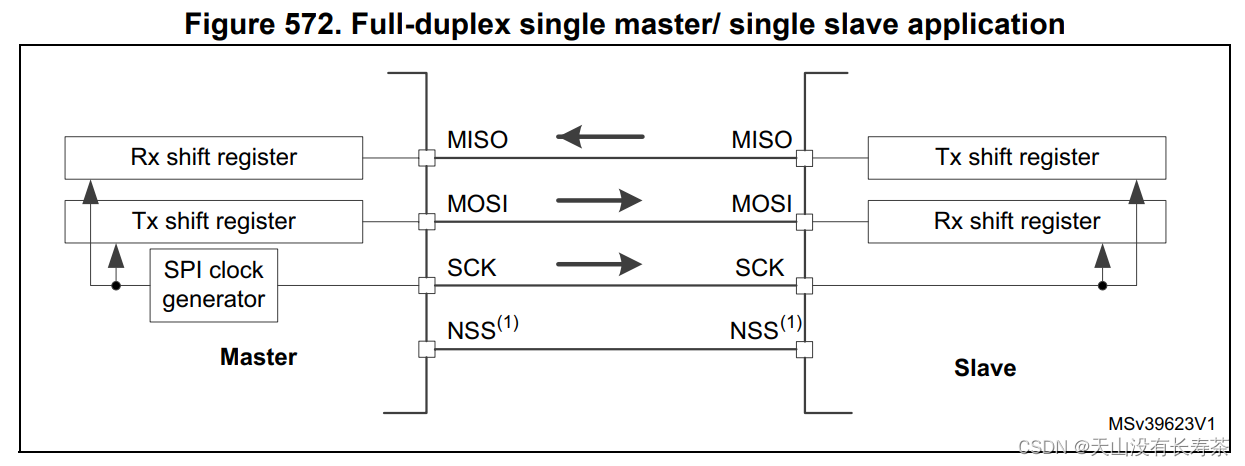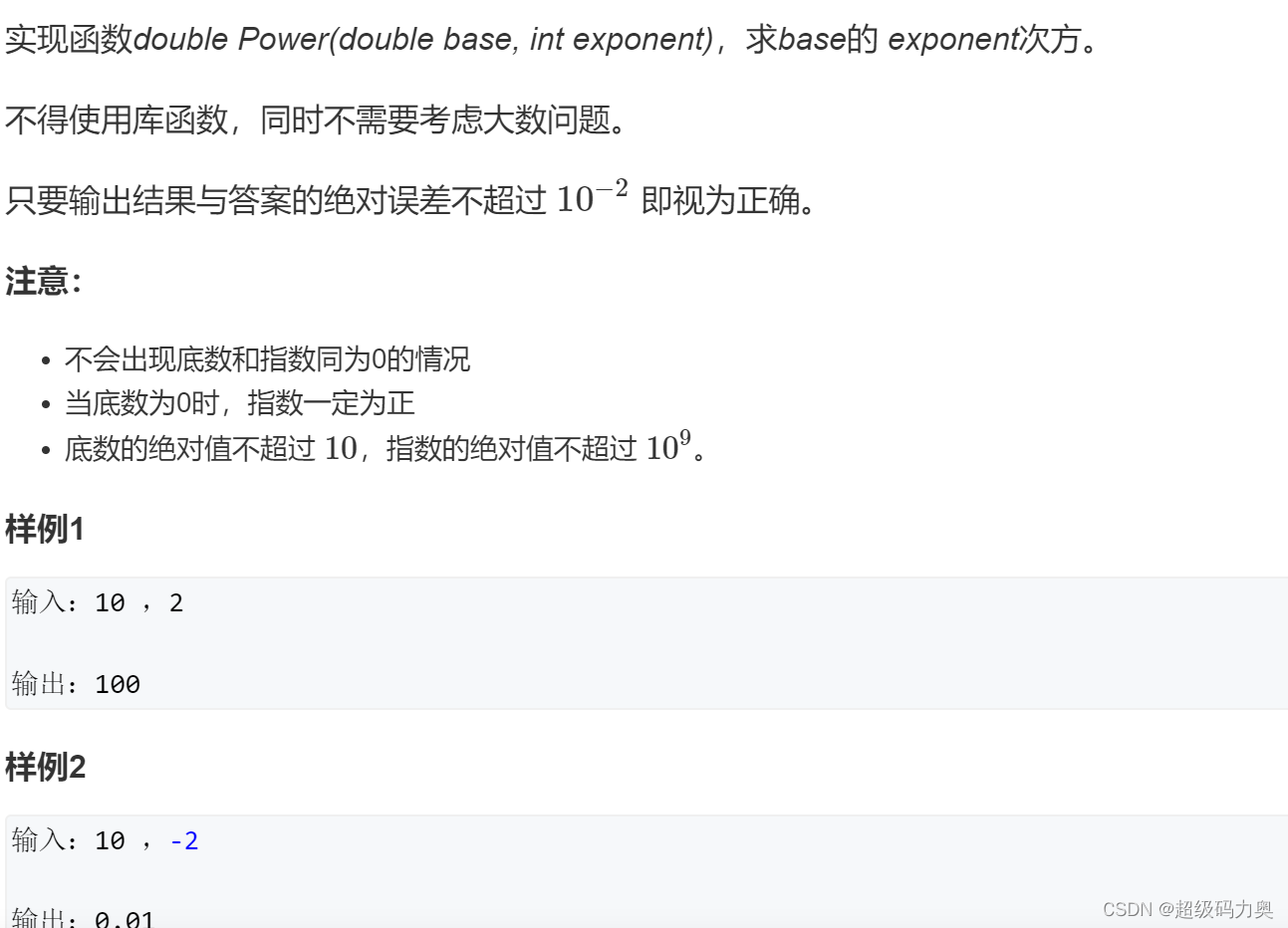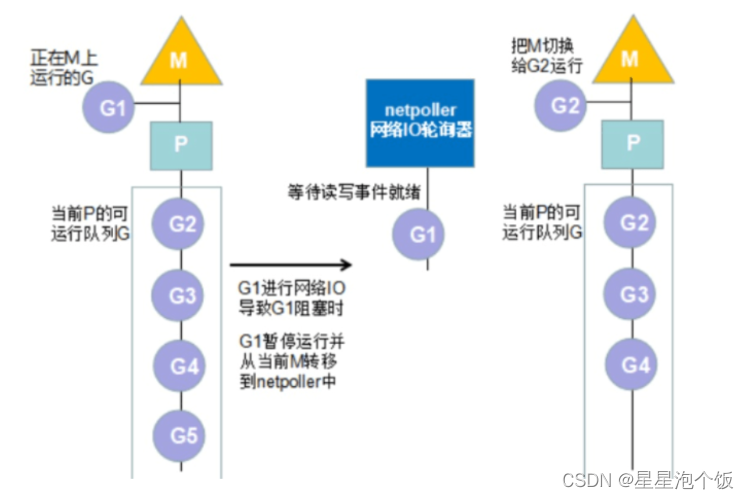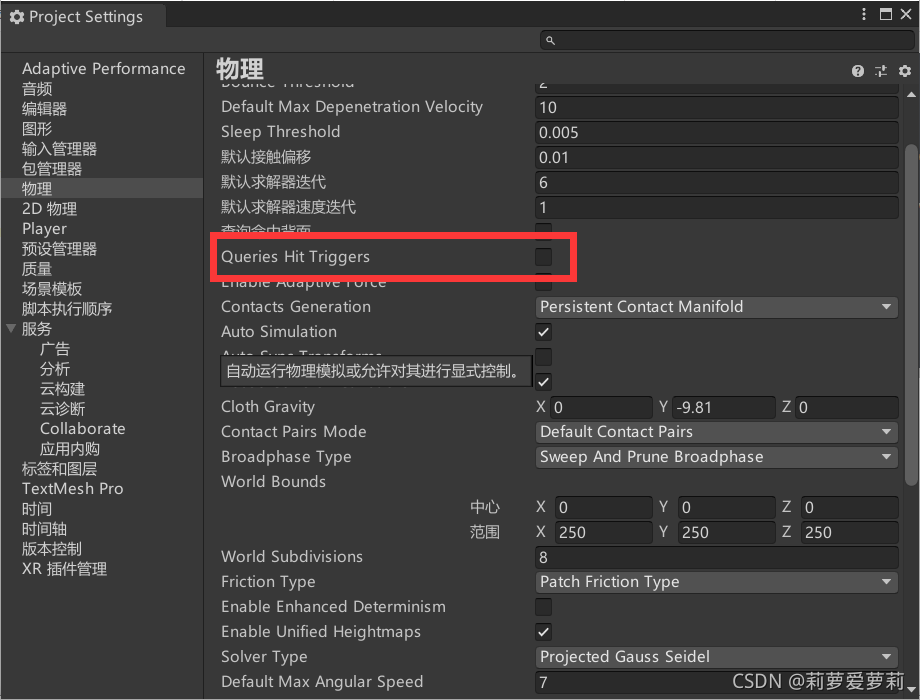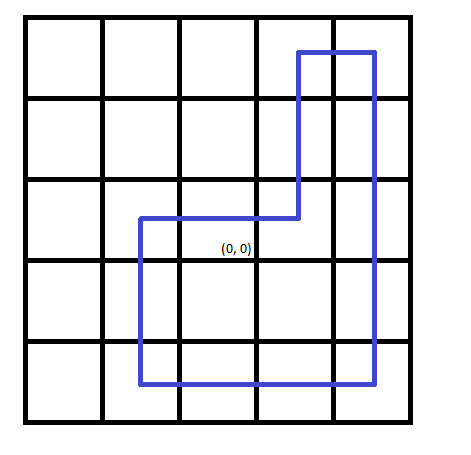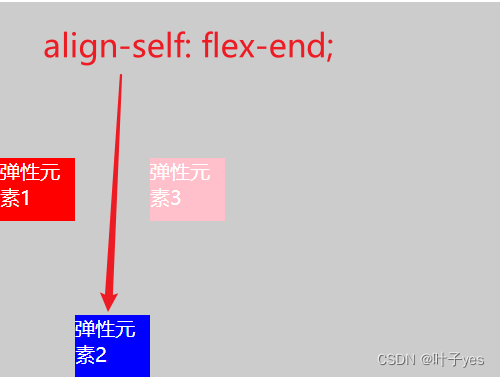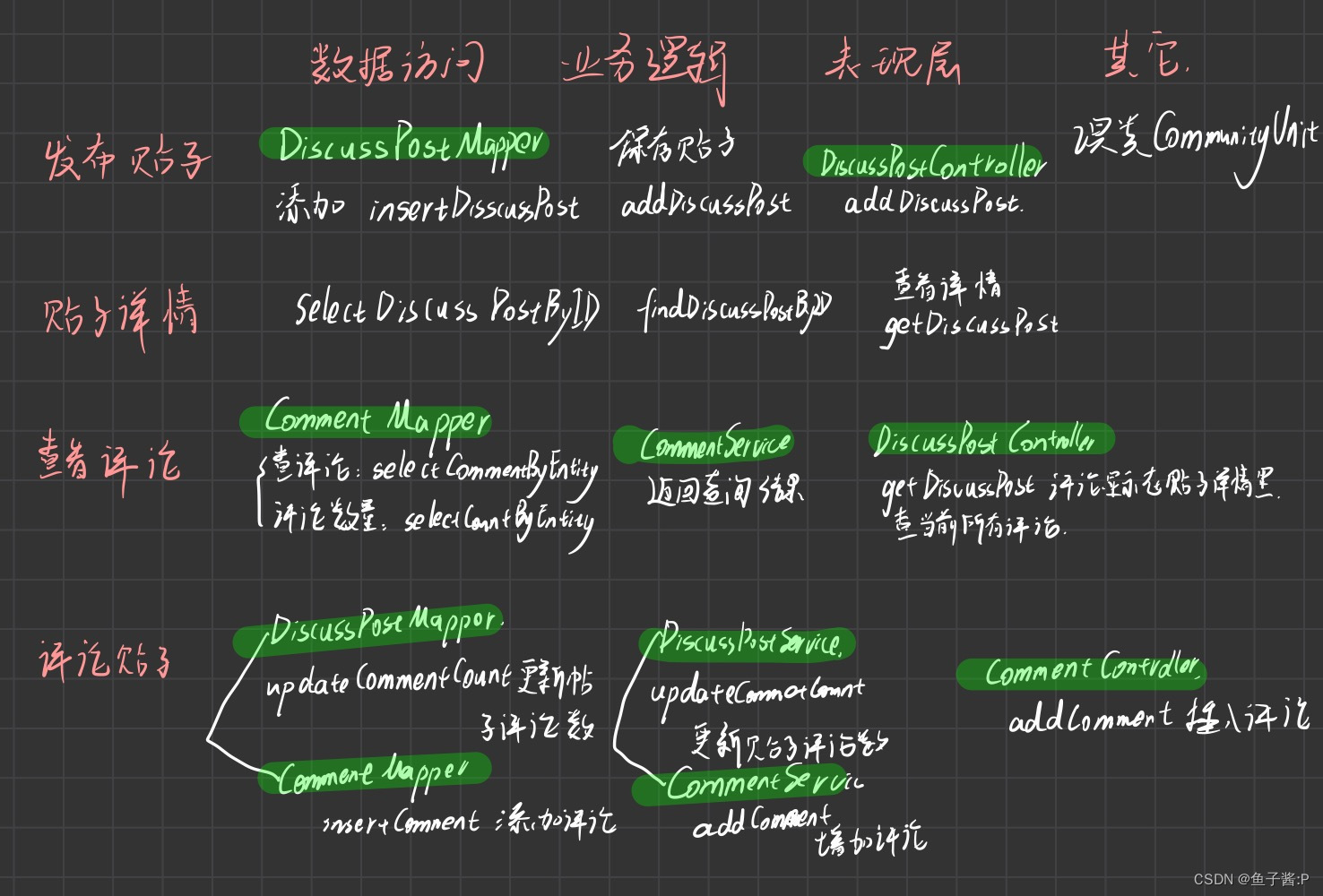当前位置:网站首页>Evaluation multipath weswood congestion control on ns3
Evaluation multipath weswood congestion control on ns3
2022-08-02 14:12:00 【Soonyang Zhang】
A coupled form westwood congestion cotrol algorithm is proposed in [1], in order to gain better performance in wirelss network. The rule to adjust congestion window is given in [2] with a clear statement.
w r ← { w r + θ w r , when an ack is received B r ∗ R T T m i n , r when packet loss event happens (1) w_r\leftarrow\begin{cases} w_r+\frac{\theta}{w_r} ,& \text{when an ack is received}\\\\ B_r*RTT_{min,r}& \text{when packet loss event happens} \end{cases} \tag{1} wr←⎩⎪⎨⎪⎧wr+wrθ,Br∗RTTmin,rwhen an ack is receivedwhen packet loss event happens(1)
Here θ = max B r 2 ( ∑ B i ) 2 \theta=\frac{\max B_r^2}{(\sum B_i)^2} θ=(∑Bi)2maxBr2.
A dumbbell topology is built to evaluate it performance.
/** Network topology
*
* 100Mb/s, 20ms 100Mb/s, 20ms
* n0--------------| |---------------n4
* | 5Mbps/s, 10ms |
* n2------------------n3
* 100Mb/s, 20ms | | 100Mb/s, 20ms
* n1--------------| |---------------n5
*
*
*/
n0--L0--n2--L1--n3--L2--n4
n1--L3--n2--L1--n3--L4--n5
Four flows are tested.
Test1
flow1 and flow4 are two subflows of a multipath session. flow2 and flow3 take Reno for rate control. flow1 and flow2 take route(n0->n4). flow3 and flow4 take route(n1->n5).
The sending rate of each flow: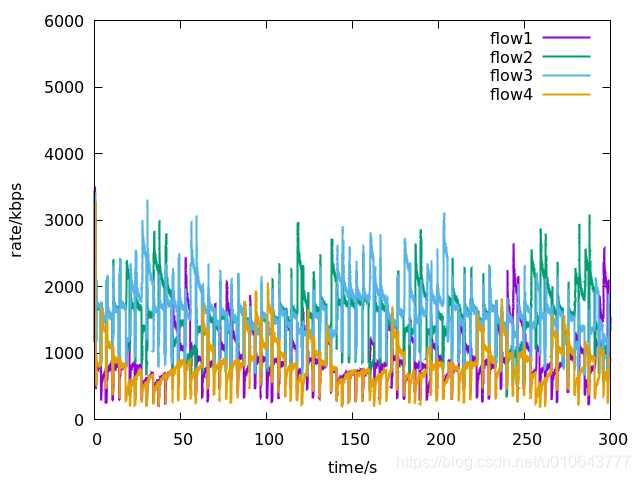
Packets received rate, here mp denotes the total throughput of the multipath session: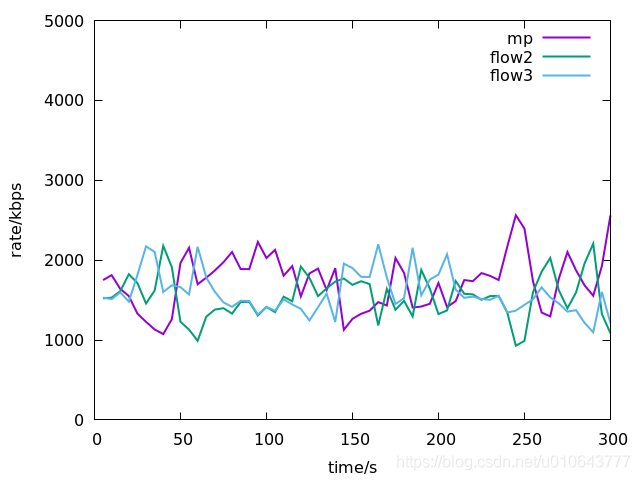
The multipath westwood session can maintain well fairness to the two single path flows (flow2 and flow3).
Test2
flow2 and flow3 take westwood for rate control. And the four flows are entering into network at different time.
Packets received rate of each session: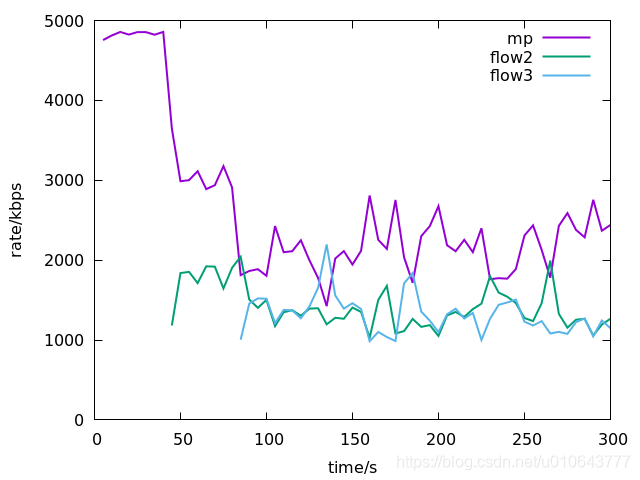
Why multipath westwood can maintain bottleneck fairness
When a flow take westwood as conestion control, the theory throughput of in a sinpath westwood can be got accrording to[4]:
T s i n g l e = 1 r t t × ( r t t − r t t m i n ) × ( 1 − p ) p = B b e s t T_{single}=\frac{1}{\sqrt{rtt\times(rtt-rtt_{min})}}\times \sqrt{\frac{(1-p)}{p}}=B_{best} Tsingle=rtt×(rtt−rttmin)1×p(1−p)=Bbest
When a subflow follows the congestion control rule in Equation (1), the theory throughput of in this subflow can be got:
T s u b f l o w , i = 1 r t t × ( r t t − r t t m i n ) × θ × ( 1 − p ) p = B i × θ T_{subflow,i}=\frac{1}{\sqrt{rtt\times(rtt-rtt_{min})}}\times \sqrt{\frac{\theta \times(1-p)}{p}}=B_{i}\times\sqrt{\theta} Tsubflow,i=rtt×(rtt−rttmin)1×pθ×(1−p)=Bi×θ
With n subflow, by assuming these paths have same rtt, the total throughput of mpwestwood is:
T = n × T s u b f l o w T=n\times T_{subflow} T=n×Tsubflow
When θ = max B r 2 ( ∑ B i ) 2 \theta=\frac{\max B_r^2}{(\sum B_i)^2} θ=(∑Bi)2maxBr2, T m u l t i p a t h = B b e s t T_{multipath}=B_{best} Tmultipath=Bbest.
[1] Wireless Multi-path TCP Westwood+ Modification to Achieve Fairness in HSDPA
[2] Improving the Performance of Multipath Congestion Control over Wireless Networks
[3] Evaluate multipath BBR congestion control on ns3
[4] westwood拥塞控制仿真
边栏推荐
猜你喜欢
随机推荐
2342. 数位和相等数对的最大和 哈希优化
专硕与学硕
Installation and configuration of Spark and related ecological components - quick recall
求解斐波那契数列的若干方法
背包问题-动态规划-理论篇
Redis common interview questions
项目:数据库表的梳理
Introduction to C language function parameter passing mode
3. User upload avatar
Test case exercises
Unity-3D数学
队列与栈
MATLAB绘图函数plot详解
MATLAB drawing command fimplicit detailed introduction to drawing implicit function graphics
光波导的入射耦合和出射耦合区域
2. Log out, log in state examination, verification code
7. Redis
永久更改pip源
flex布局
MATLAB绘图函数fplot详解
